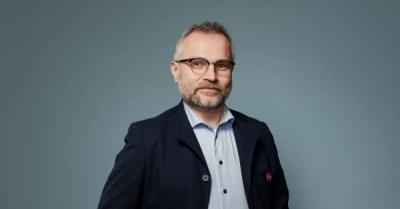Conventional collection of seismic data with the aid of streamers can only register pressure waves. By placing receivers on the seabed, an extra component can be measured: shear waves. These shear waves provide extra information about the seabed. Petroleum Geo-Services (PGS) started with
four-component (4C) technology in 1995, but it has yet to take off in the industry.
“Unfortunately, the development of 4C was set back by the oil price crash of 1998, but we see that activity is increasing again,” says consultant Walter Sognnes of PGS. “We should expect a powerful upswing in the market in the next two or three years, or else development of technology will dry up and 4C will become a niche product for very special cases.”


He is in no doubt that the industry can benefit from this type of data. It is getting more and more difficult to find recoverable deposits in mature provinces like the North Sea, and the hunt for oil is being moved to greater and greater depths. Both horizontal drilling and advanced drainage of the reservoir demand detailed structural and lithological images of the reservoir, and this has increased the significance of seismics.
“At the same time we are trying to extract more information out of the seismic data. Collecting the entire wave field with the aid of 4C enables us to make a quantum leap with regard to what kind of information we can extract. The best possible reservoir description at the earliest possible date can save the oil companies a lot of money,” claims Sognness.
Dragged array
Only 10 to 15 years ago it was completely unthinkable to register shear waves in marine seismics. For this means placing instruments on the seabed that measure particle movements in three directions with the aid of geophones in three directions, plus pressure changes in the water layer with the aid of a hydrophone. That makes four components, whence the name of 4C. The instruments are to register movements smaller than a thousandth of a millimetre in three different directions – at water depths in excess of 2000 metres.
Like conventional seismics, the development of 4C has been dominated by Norwegian technology and expertise. PGS has developed a method they call “dragged array” to collect both two-dimension (2D) and three-dimensional (3D) 4C data. A cable with measurement stations every 25 metres is laid on the seabed. A vessel shoots pressure waves over the array of receivers, while another registers the data collected on the seabed. After one area has been shot, the cable is lifted or dragged to the next position.
“It goes without saying that this is very time-consuming and costly in comparison with collection of traditional marine seismics. So far it has only been used for smaller areas with very special geological problems, but we should not forget that 3D seismics were also very expensive in the beginning.”
See more
Roughly speaking, the utility of 4C seismics can be divided into two main groups: better pressure-wave imaging and alternative imaging based on shear waves.
“Pressure-wave imaging is improved because both source and receiver are free-standing, that is, the reservoir can be illuminated from every side. This is of particular usefulness in geologically complicated areas,” explains Sognness.
In contrast to pressure waves, shear waves are unaffected by gas clouds over the reservoir, and invisible reservoirs can rendered visible, because the speed contrast between the sand and the surrounding slate is better.
“The combination of pressure and shear waves gives us a better understanding of the lithology”, adds Sognness.
What can you do to convince the industry of the value of using 4C, Walter Sogness?
“New technology is only sold through good examples. We must therefore collect data where we have the best chance of demonstrating its utility. We have several examples already, but this is a long road to walk. We need a lot of input and collaboration with the oil companies’ own engineering communities.”

